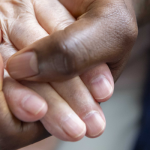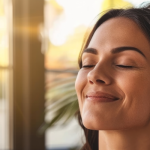Music and quiet laughter drift out of the hall of the nursing home. Seniors are gliding across the dance floor while others are standing in a circle swinging their hips and arms in turn. The mood is good. ‘Dancing is fun,’ says Gerd Mittag. The former professional dancer and long-standing dance teacher provides tangible reasons why dancing helps with dementia and Parkinson’s disease.
It is a fact that physical and mental fitness decline with age, and personality and social contacts also change. Friends and family fall ill or die, and the social network shrinks. ‘These changes can be frightening,’ explains Mittag, who is currently doing his doctorate in sports science in the Department of Education. In addition, diseases such as dementia and Parkinson’s pose further challenges in old age. Around 1.6 million people in Germany live with dementia, and around 300,000 new cases are added each year. The number of people affected doubles every 20 years. By 2030, around 75 million people worldwide are expected to be affected [1, 2].
A better quality of life through dancing in old age

‘But there is hope,’ says Mittag, recommending dancing as a way to make growing older a positive experience. Right at the start of our conversation, the expert from Munich points out that it doesn’t always take a professional dance instructor, ’There are free DVDs, especially for senior centres, that explain dance steps and provide pedagogical and didactic tips.’
Because dancing not only keeps you fit, it also promotes mental and social skills. The 55-year-old dance physician knows: ‘When you dance, your body releases happy hormones such as serotonin and dopamine – you simply feel better.’ In addition, dancing can have a positive influence on concentration, coordination and mobility, which is particularly important for the quality of life of older people because it encompasses more than material prosperity. It includes the satisfaction of basic psychological needs such as curiosity and the thirst for knowledge. ‘Lifelong learning, as promoted by dancing, plays a central role here,’ says Mittag.
Additionally, regular dancing slows down the loss of muscle mass and movement quality. This is particularly relevant in old age when it comes to maintaining abilities and skills.
Social aspects and joie de vivre
Dancing in a group also promotes social cohesion and autonomy[3, 4]. It trains spatial awareness: who is dancing with me, how many people are around me? In rhythmic movements, for example, seniors dance freely in the room, touching each other or dancing towards each other is encouraged – this strengthens the feeling of social contact and simultaneously trains coordination.
The classic seated dance, on the other hand, should be avoided if possible or only used for seniors who are really restricted in their movement, such as people in wheelchairs. ‘We have to expect people to do something,’ advises Mittag. The worst thing is to deny all supposedly old people their mobility. This means that there is a large gap in mobility among today’s seniors. ‘There are many who have done sports all their lives and are very mobile. And there are some who have spent almost all of their lives sitting and find movement very difficult.’
So it takes courage and a willingness to push your physical limits a little. The teacher advises dancers to keep an eye on their own pulse, but at the same time encourages some to dance on to the next song.
Dance as a health prevention
As mentioned, moving to music can significantly help to prevent falls. It strengthens muscles and links new coordinative processes neuronally. It stimulates a region in the brain that is responsible for multisensory experiences and thus connects coordination, thought processes and movements. For years, the WHO has recommended that adults aged 65 and over should do at least 150 minutes of moderate-intensity physical activity or 75 minutes of vigorous-intensity physical activity every week[5].
Aerobic activity, i.e. endurance sports, should be done in segments of at least ten minutes. This lowers blood pressure and the pulse rate and strengthens the heart. Mittag knows: ‘People need to be kept mobile. Dancing is a holistic way of doing this, and it’s fun too!’
1 Bickel H. Infoblatt 1. Die Häufigkeit von Demenzerkrankungen 2020: 1–10
2 Fink H, Rosenzweig R. Was hält uns jung? Neuronale Perspektiven für den Umgang mit Neuem. Nürnberg: Kortizes, 2020
3 Steinberg C, Rudi H. Tanzpädagogik und Tanzvermittlung. In: Obermaier M, Steinberg C, Molzberger R et al. (Hrsg). Tanzpädagogik – Tanzvermittlung. Stuttgart, Deutschland: utb GmbH, 2024: 103–120
4 Müller P. Untersuchungen zum Einfluss von sportinduzierter Neuroplastizität bei kognitiv gesunden Senioren im Kontext der Demenzprävention. Dissertation, 2018
5 World Health Organization. Global Recommendations on Physical Activity for Health 2010

